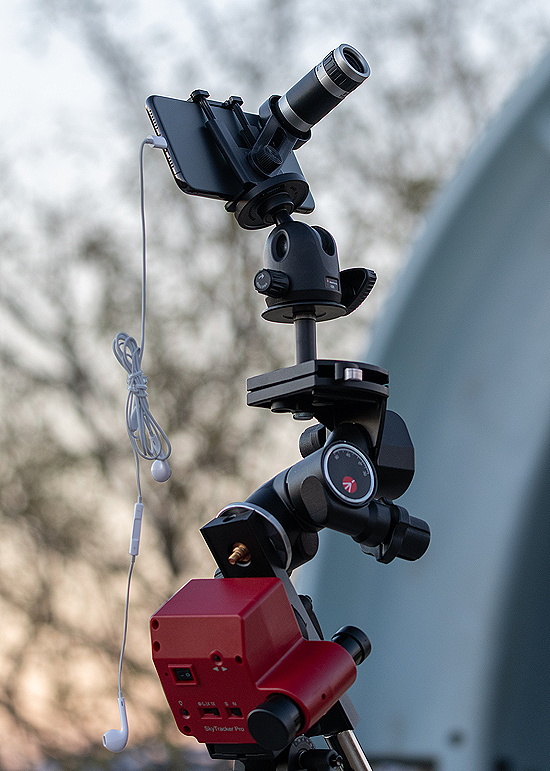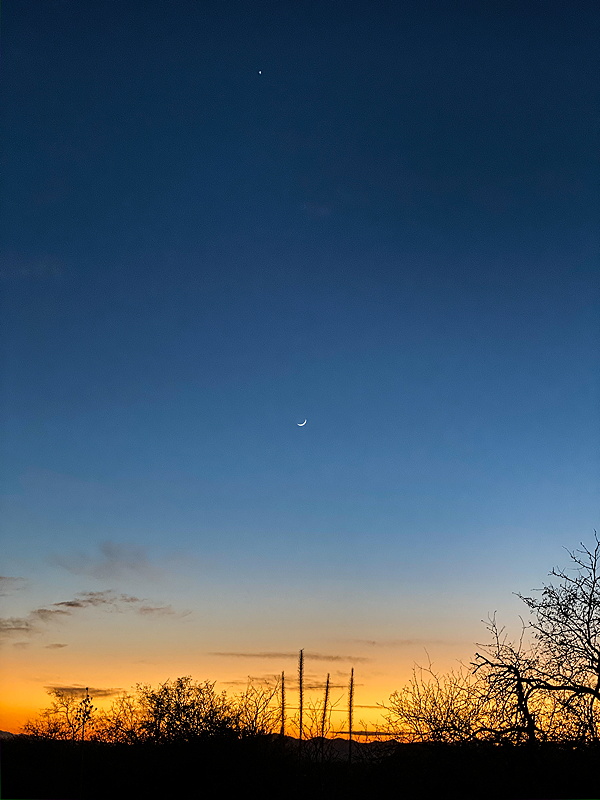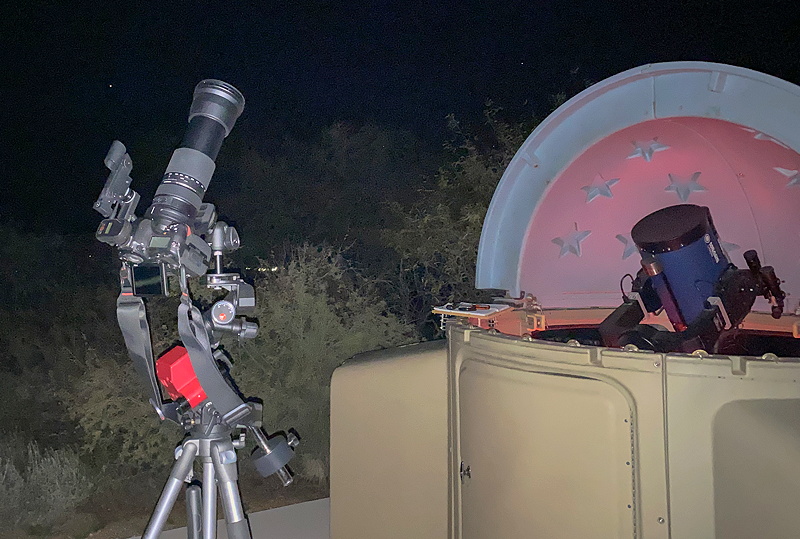iPhone 11 Pro Max M44 (Beehive Cluster)
Posted: 27 January 2020
The forecasts were promising for Sunday, 26 January 2020, but the sky was not as sunset approached. I decided to go out anyway as Comet C/2017 T2 (PanSTARRS) would be about 1° from the Double Cluster.
|
Open: Sunday, 26 January 2020, 1738 MST Temperature: 73°F |
Session: 1428 Conditions: Partly cloudy |
Equipment:
SkyTracker Pro
12x50 binoculars
Camera:
iPhone 11 Pro Max
D850 DSLR
Due to the clouds I did not use the 12" LX600 telescope this session.
I set up the iPhone 11 Pro Max + 8X telephoto lens on the iOptron SkyTracker Pro on the observatory patio.

1817 MST: took this iPhone 2X telephoto lens photograph of the western sky showing the planet Venus (top) and the crescent Moon (center) using the Camera app.

This is a close-up on the Moon (with a hint of Earthshine) taken with the D850 DSLR (f/8, 1/125sec, ISO 1600, FL 600mm, handheld, cropped).

1827 MST: the locations of Comet C/2017 T2 and M44 (the Praesepe Cluster), my two planned imaging targets for the night, were covered by clouds. I began waiting for the end of Astronomical Twilight (1915 MST).
1830 MST: viewed the Moon with Earthshine, 12x50 binoculars. Nice view.
1900 MST: viewed M44 (Praesepe Cluster, also known as the Beehive Cluster, open star cluster), low in the eastern sky and through thin clouds, 12x50 binoculars.
The Zodiacal Light was visible in the western sky.
1914 MST: M44 was now in the clear. Polar aligned the SkyTracker Pro with the iPhone 11 Pro Max + 8X telephoto lens mounted.
1921 MST: took this tracked photo of M44 (Praesepe Cluster) using the iOS app NightCap Camera (Long Exposure, Light Boost, ISO 12500, 1sec, 1 minute exposure, 1X + 8X telephoto).

I then mounted the D850 DSLR + 150-600mm on the SkyTracker Pro and rechecked the polar alignment.

The comet and the Double Cluster were clear of clouds. I spent the next hour trying to get a good photo of Comet C/2017 T2 (PanSTARRS) about 1° from the Double Cluster using FL 600mm. Unfortunately, for some reason tracking was not very good, with stars wondering all over the place. I checked the mount bolts tightness and even tried alternative mounting of the camera. Nothing worked. I finally gave up. (Hours later I realized what the problem had been. I had forgotten to turn the lens Vibration Reduction OFF. That likely caused the issue. I will try again on the next session, weather permitting.)
2052 MST: took a Sky Quality reading.
|
Close: Sunday, 26 January 2020, 2102 MST Temperature: 50°F |
Session Length: 3h 24m Conditions: Mostly clear, humidity 48%, SQM 21.1 |
Comments are welcome using Email. Twitter users can use the button below to tweet this report to their followers. Thanks.
Cassiopeia Observatory Home Page
Copyright ©2020 Michael L. Weasner / mweasner@me.com
URL = http://www.weasner.com/co/Reports/2020/01/27/index.html
